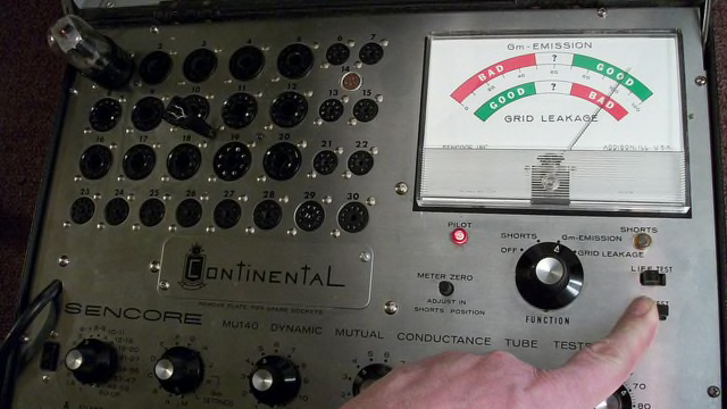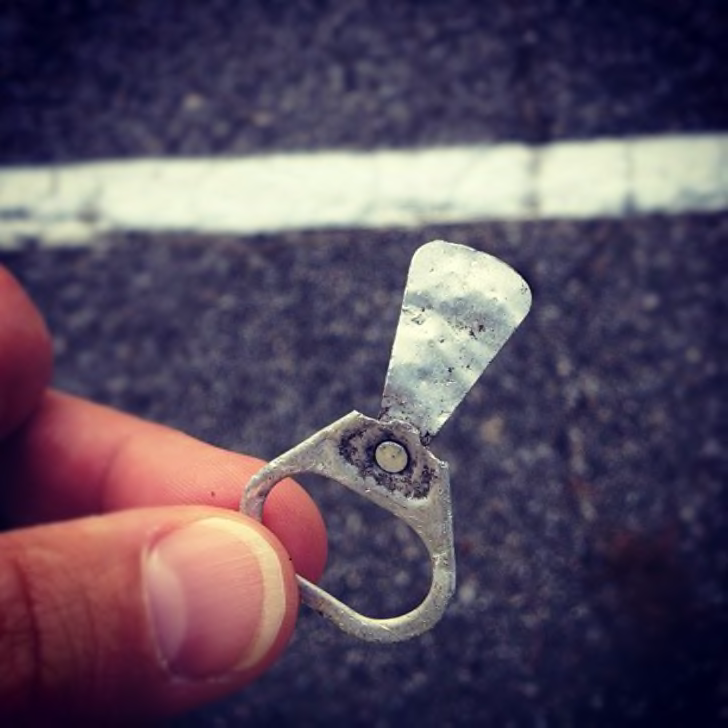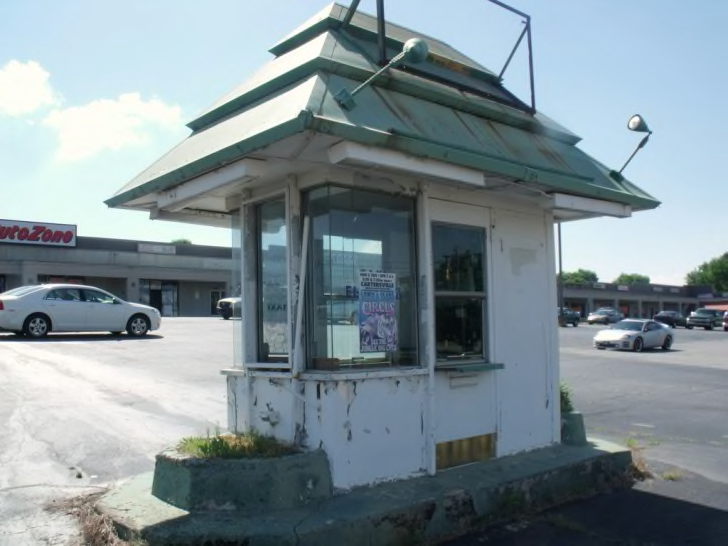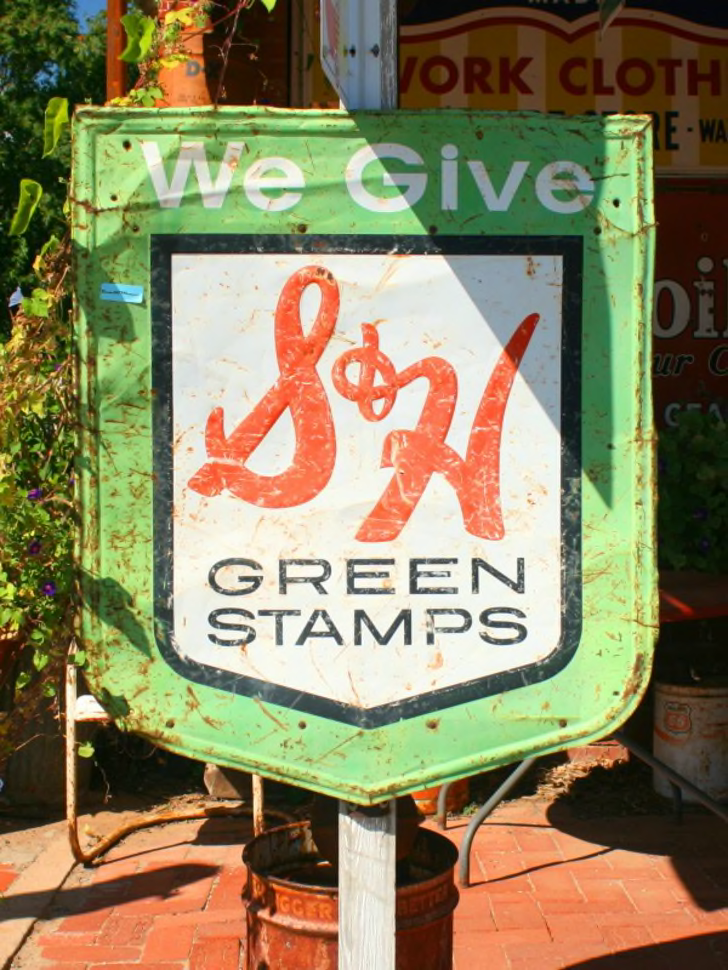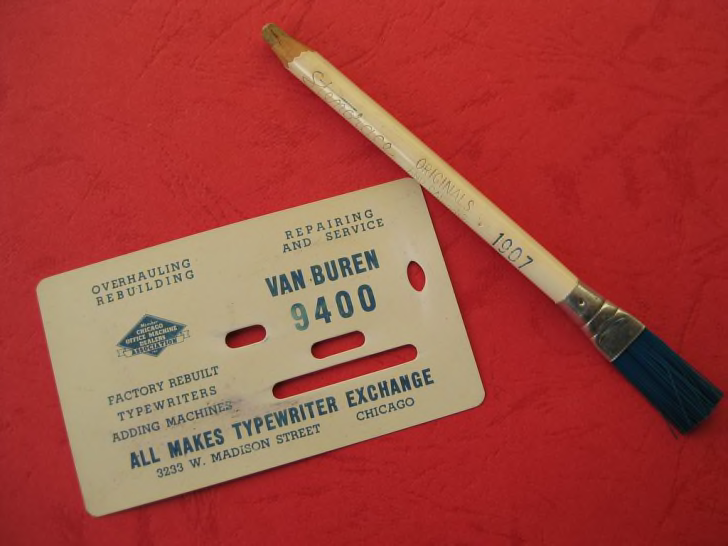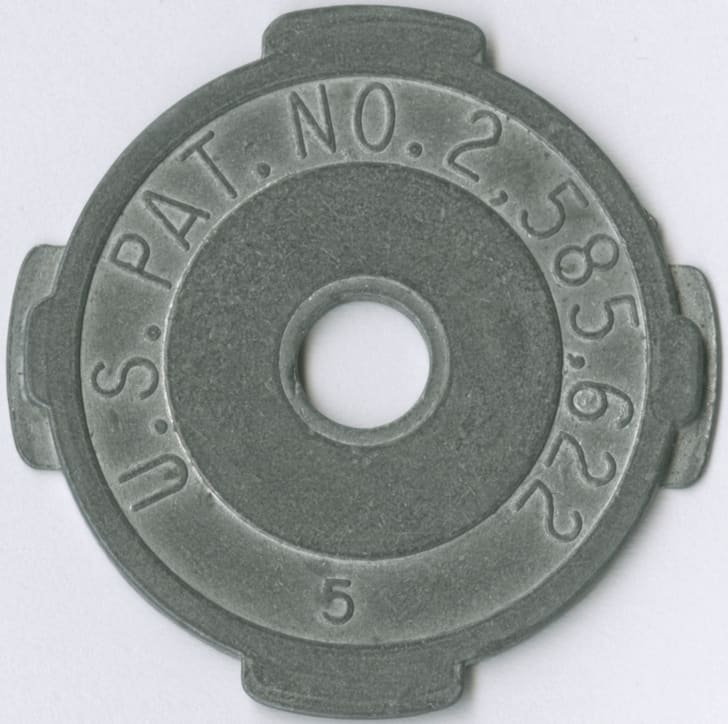
Historical
See other Historical Articles
Title: 11 "Modern Antiques" Kids Today Have Never Seen
Source:
MentalFloss
URL Source: https://www.mentalfloss.com/article ... -kids-have-probably-never-seen
Published: Apr 11, 2012
Author: Kara Kovalchik
Post Date: 2020-06-04 04:56:21 by Deckard
Keywords: None
Views: 921
Comments: 2
Even though I'm fairly ancient, I've never seen a Model T outside of a classic auto show. So I realize that there are many things that have been obsolete since the elastic waistband was invented and would confound anyone under age 70. But what about some common items that have come and gone within the last 30 or so years? See how many of these you recognize, and how many of them would puzzle your kids or grandkids. Seven-inch singles produced in the US had a large half-dollar size hole in the center, unlike the tiny hole punched in LPs that fit conveniently onto a turntable spindle. This large hole tradition was originally instituted in order to accommodate the mechanism inside a jukebox. Rather than making a separate version for home use, the simple solution was to sell adapters that popped into the center of a 45, making it playable on a standard record player. These gadgets were usually found in a bin near the checkout at every record store, a dozen or so for a dollar. Those good ol' fashioned metal roller skates that strapped onto your shoes were useless if you didn't have a skate key on hand to adjust them. The hexagonal loop on top was used to turn the bolt that adjusted the length of the skate and the tubular end fit on the pin that tightened the toe grips. The long narrow hole in the middle? Why, that was for stringing a shoelace through so you could wear the key around your neck while skating. Many a barbecue and tailgate party was ruined in the pre-pop top days when it was discovered that no one had remembered to bring a church key to the proceedings. The pointy end punctured beer (and soda pop) cans open – one hole for pouring, one for a vent. The rounded end was used to remove bottle caps – twist-off crown caps weren't invented until the 1960s, and even then it took some years for breweries to start using them on their products. But then again, most veteran party animals of that era knew how to open a beer bottle on a car bumper or table edge in an emergency. Household electronics have become as disposable as Pampers in recent years; if your flat screen television stops working, it's usually just as cheap to buy a new one as to have the old one repaired. But 30-plus years ago when a TV went on the fritz you called the TV Repair Man. He was so ubiquitous that he made house calls, but his services were expensive (and today's Cable Guy has taken the TV Repair Man's vague "I'll be there sometime between X and Y o'clock" promise to a new level). Since a good percentage of the TV malfunctions back then were due to malfunctioning vacuum tubes, DIY Dads started diagnosing and replacing the tubes on their own, saving both time and money. Almost every drugstore, hardware store, and even grocery store had a self-service tube testing machine stashed among the gumball and cigarette machines. Dad (or Mom or whoever) simply brought whichever tubes he thought suspect and tested them on the machine to see whether they were functional. If the tube in question was kaput, there was a wide selection of brand new tubes stocked in the cabinet underneath the machine available for purchase. In between cans requiring a church key and today's pop tops there were pull tab soda and beer cans. The convenience of not requiring an opener was revolutionary, but the innovation came with a downfall: a new type of litter. Instead of disposing of their pull tabs responsibly, many folks simply discarded them on the ground before chugging away. Walking barefoot on the beach in the 1960s and '70s was often something of an obstacle course; those tabs weren't always immediately visible, but they were razor-sharp, and savvy sunbathers included Band-Aids in their picnic baskets for the inevitable sliced toe. The abandoned hut as shown in the right photo is still a frequent sight in the parking lots of older shopping malls across the country. Some of them were re-purposed for a while, but let's face it – there's not much you can do with a form-fitting booth situated miles from the nearest bathroom. Back when cameras still used actual film, and before drugstores offered one hour photo developing, Fotomat was the convenient method of getting your pictures back within 24 hours. You didn't even have to get out of your car (this was at a time when fast-food drive-through windows were still few and far between). Some older roadside accommodations still have a bottle opener mounted on the bathroom wall, but a lot of the guests in those cases are stumped enough to ask the front desk, "What the heck is that thing?" We refer you back to the bottle-opening end of the church key and further explain that pop machines ("soda machines" to you heathens) at most motels in the 1950s, '60s, and '70s dispensed pop the way God intended – ice cold in 10-ounce glass bottles with a small ring of ice floating in the neck. There was a bottle opener included on the machine, but a lot of folks preferred to wait until they returned to the sanctuary of their room before they popped the cap off and enjoyed that first refreshing sip. And then there were those (wink-wink) who eschewed the pop machine but traveled instead with a cooler full of beer. That's why the opener was usually mounted in the bathroom – all that beverage spillage was easier to mop up off a tile floor rather than have it soak into the carpeted areas of the room. Many suburban houses built prior to 1960 had a built-in pass-through door commonly referred to as a "milk chute." This was to accommodate the neighborhood milkman, who still made daily runs door-to-door. The milk chute allowed him to leave his goods in a protected area, and Mom could also leave his money inside, freeing her up from having to wait at home for the milk delivery (see TV Repairman above) all day. And as any child who grew up in this era knows, the milk chute was a necessary means of ingress when either Mom or Dad forgot their house key; the smallest kid in the family had to shimmy through that opening and then go open the back door. (And even though it seemed funny at the time, parents were not pleased when you playfully called out from inside, "What will you give me if I let you in?") At one time this small triangular window was standard equipment on every American automobile. Some folks called it the "no-draft" (its official name), some called it the "vent," and others (including my Mom) called it the "wing." Whatever the name, the purpose was the same: in those days when air conditioning was a very expensive option and opening the main driver side and passenger windows caused too much turbulence (not to mention noise) the no-draft provided quiet yet efficient air circulation while driving during warm weather. TV-Holics certainly recall that first season episode of The Brady Bunch in which the kids were fighting over Checker Trading Stamps. When that episode was originally filmed, trading stamps were all the rage, and S&H Green Stamps led the pack. Pasting Green Stamps into books was how families spent their evenings before scratch-off lottery tickets were invented, and unlike the lottery, Green Stamp premiums were within reach if you purchased enough groceries or gasoline. The "We Give Green Stamps" enticement was a major boon for merchants; there were many consumers who decided "where to buy" solely on the basis of Green Stamp giveaway. And the rewards were great; your average Green Stamp redemption center had everything from home appliances to musical instruments to furniture available if you'd filled X amount (actually more like XXXX amount) of books. I recall a day, maybe a dozen years ago, when a young new hire at our office was browsing through the closet that contained various supplies (and which probably had not been thoroughly cleaned since the Carter Administration) and approached me asking, "What is this weird thing?" What she held in her hand was a typewriter eraser, a pencil-like device that had a gritty rubber eraser at one end and a brush at the other. Even after White-Out and correction tape were commonly available, neither worked well on onion skin (a type of very thin paper regularly used for multiple carbon copies...perhaps we need to add a twelfth item to this list...) and typewriter erasers were still a necessity. The abrasive end was used like a regular pencil eraser, and then the typist brushed away the resultant debris with the bristle end.1. 45 RPM RECORD ADAPTER
2. SKATE KEY

3. CHURCH KEY

4. SELF-SERVICE TUBE TESTER
5. PULL TABS
6. FOTOMAT BOOTH
7. MOTEL ROOM WALL-MOUNTED BOTTLE OPENER

8. MILK CHUTE

9. NO-DRAFT WINDOW

10. GREEN STAMPS
11. TYPEWRITER ERASER
Post Comment Private Reply Ignore Thread
Top • Page Up • Full Thread • Page Down • Bottom/Latest
#1. To: Deckard (#0)
Deck, thanks for posting. I remember all that stuff. In addition to S&H Green stamps, there was Top Value Stamps. I also remember when gas stations would give items with fill ups - like glasses, bowls, etc. I even have a few of those inherited from my Mom. Thanks again !!!
Si vis pacem, para bellum Rebellion to tyrants is obedience to God. "If there are no dogs in Heaven, then when I die I want to go where they went." (Will Rogers) "No one ever rescues an old dog. They lay in a cage until they die. PLEASE save one. None of us wants to die cold and alone... --Dennis Olson " People that say money can't buy you happiness, have never paid an adoption fee
Our family preferred Blue Chip stamps and we kids moistened a couple million of them to fill up the books. S&H Green was sort of the low-rent alternative in our neck of the woods. I've got a couple of old LA Rams glasses from the gas-station fillups, too. If I cared about sportsball at all I'd probably treasure them more. And somewhere I've got one or two of those eraser shields, metal ones, from the old drafting boards.
#2. To: Stoner (#1)
(Edited)
In addition to S&H Green stamps, there was Top Value Stamps. I also remember when gas stations would give items with fill ups - like glasses, bowls, etc.
Top • Page Up • Full Thread • Page Down • Bottom/Latest
[Home] [Headlines] [Latest Articles] [Latest Comments] [Post] [Mail] [Sign-in] [Setup] [Help] [Register]

